What could be more beautiful and royal roses on the site? Many gardeners are afraid to grow this flower because of his capricious character. But you can just once once learn how to grow roses and avoid the most frequent mistakes in its cultivation, and this "queen of flowers" will delight you their luxurious appearance and fragrance. Gardeners of the Urals also have all the opportunities to acquire their own rosary, despite the complex climatic conditions of their region. But thanks to the efforts of breeders, those varieties appeared that successfully adapt to such a climate and feel quite comfortable. Of course, if you live in the Urals and you want to go to grow roses for the first time, it is worth studying all the secrets of her landing, care for this flower, etc. It is about this that we will talk in this article.
Rose - Queen of Flowers. History
Rose is truly the royal flower who admired and even worshiped in many countries since ancient times. Many legends and legends on rose can be found in the literature of almost all nations of the world:
- in Ancient India, in order to ask for anything at the king, it was enough to bring him a rose;
- in ancient Iran, believed that the rose was a gift of Allah. There is a legend that all representatives of the flora came to Allah once and asked to appoint them a new lord instead of the lotus. And Allah sent a white rose;
- in Persia, there was a beautiful legend of the nightingale and rose. The nightingale was so fascinated by this flower, which pressed him to his chest and died of rose daggers. The flower was immediately painted in the blood color - red;
- in ancient China, Rose admired the Confucius himself, the library of which was full of books about this amazing flower, and the gardens were filled with the fragrance of various roses;
- in ancient Egypt from roses, they prepared food, and to all the well-known Queen Cleopatra used a rose for cosmetics purposes;
- in ancient Greece, the origin of a rose was associated with Aphrodite. People believed that the flower arose from the foam that covered the body of the goddess;
- in ancient Rome, Rosa was present in the palaces simply in incredible quantities. The floors of roses showered the floors, made pillows from them, ships flooded on the water, covered with rose petals, and in the city there was a persistent fragrance of this flower.
Rose classification
Rose is the flower that has an incredible number of groups and varieties. The very first varieties were obtained by crossing wild roses, then each other began to cross the alignment. Currently, the classification of roses is so wide that in different sources you can find different information. Each definite scheme of roses classification summarizes them on some one feature, because In the same way, all the signs are simply impossible. Modern gardeners, landscape designers prefer the next system classification system, according to which they are divided into 8 groups. Each group combines varieties that are similar in agrotechnics, winter hardiness, height, blooming, methods of use in landscape design, etc.
Park roses
A group of park roses does not always stand out in a separate group in other classifications systems. In Russia, this group includes wild-growing types of roses, as well as their cultivated species that are capable of perfectly tolerance of rest periods in a natural way. It is among park roses that can be found the most winter-hardy varieties. Among the most popular varieties can be listed: ritausma, robust, pink Robust, Grotandorst, Rugelda.
Shrub roses
Shrub roses, or splashes, are sometimes called flightlet. This group combines varieties with long blossom, lush and fast enough. This group includes "old" roses and "modern", English roses. The distinctive feature of the roses of this group is incredible fragrance. Popular varieties: Abraham Darby, Charles Austin, Graham Thomas, etc.
Pleet roses
By one name of this group, you can imagine the appearance of roses, which are combined into this group. Pleet roses have long flexible stems that can reach 5 meters in length. Of course, such roses require support, and most often used in vertical landscaping. New hybrid varieties of this group can delight the eye with incredible flowering not once per season. The varieties of this group are divided into small-beds and large-flowered. Large-flowered varieties have greater aroma. The most popular varieties: Rosarium Yuterzen, Schvantenzee, Dorothy Perkins, New Upon, Excels.
Tea-hybrid roses
The history of modern roses begins just with the cultivation of tea roses. These flowers are very warm-loving. Very fragrant flowers can grow both alone and in inflorescences. One of the main drawbacks of tea-hybrid roses can be considered their high exposure to various diseases and pests. A large number of hybrid varieties are brought by breeders, which are able to delight their blossom almost all summer. Among the most famous varieties can be allocated: Limbo, Mainzer, Gloria Dei, Angelik, Black Bakkar, etc.
Miniature Roses
Miniature roses, as you can guess one by one name, have quite small sizes. They grow up to 40-50 cm. In their appearance, miniature roses are very similar to tea-hybrid. They are sufficiently unpretentious, resistant to unfavorable nature factors, flower for a long time. An important advantage is the ability of miniature roses well to transfer the winter under the snow, even without difficult shelter. Among the most popular varieties can be called: Baby Masquerade, Mandarin, Hello Dolly, and others.
Roses Floribunda
If you want to grow an unsurpassed rosary, then Floribunda roses can be an excellent option for creating it. The roses of this group were obtained by hybridization of tea roses, compared to which they are more resistant to adverse conditions, less susceptible to disease and pests. Compact and beautiful bushes are decorated with inflorescences from small but lush colors. Varieties: apricola, Galaxy, Augusta Louise, Gyr Dear Grimm, etc.
Canadian Roses
One of the most non-prolonged species of roses in Russia. This group combined roses, which by long-lasting crosses were removed in Canada. Distinctive features are long-term flowering, resistance to adverse nature factors, exceptional winter hardiness (capable of transferring up to minus 40 degrees), not exposure to diseases and pests. The group is currently actively replenished with new and new varieties. Among already known can be allocated: Moden Blasch, Alexander McCenzie, David Thompson, etc.
Sound roses
Soil roses are a fairly new group of these plants. Gardeners will certainly attract the ability of these roses to abundant flowering, resistance to adverse weather factors. Flowers in lush bushes, form long shoots that create the illusion of a beautiful carpet from luxurious colors. Despite the fact that the bushes of the soil roses are pretty thick and spread, they do not require annual trimming. Varieties: Gold Carpet, Nedel, Fairy, etc.
Useful properties and application of roses
Remember that you can grow roses in your site not only with aesthetic purpose, but also with practical. It has long been known about the healing effects of roses on the human body, if you learn how to apply it correctly. Since ancient times, the following effect of this flower on the body is observed:
- anti-inflammatory action;
- wound-healing effect;
- soothing action;
- lusting action.
Folk Lekari learned how to prepare from roses, mainly from her petals, infusions, ointments, decoctions, pink oils, pink water, etc. Rose on your site can be an assistant in the treatment of diseases such as bronchial asthma, rhinitis, allergic rhinitis, stomach ulcer, various diseases of the gastrointestinal tract of inflammatory nature, angina, tonsillitis, respiratory diseases, conjunctivitis, leak lesions, necrosis and many Other ailments. Rose is widely used not only in folk medicine, but also in cosmetology and cooking. The rejuvenating effect of various masks, tonic, rose-based creams have long been known to women since ancient times.
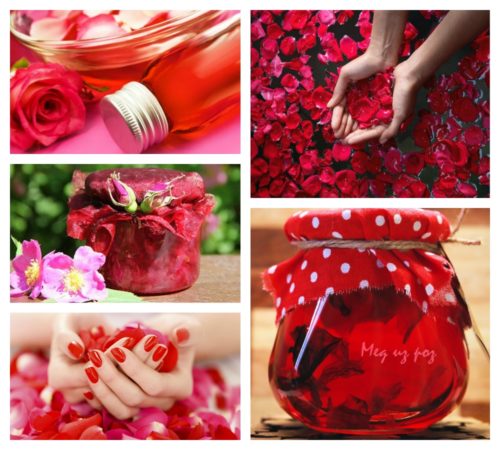
Roses for the Urals and Siberia. Catalog of varieties
The climate of the Urals and Siberia is quite complicated and harsh. Not all plants are able to transfer laid winter frosts, gusty winds, prolonged spring thaws, etc. The choice of the right variety when growing roses in the Urals or in Siberia is of paramount and fundamental importance. The best option will be if roses for the Urals buy in the Siberian nursery, where they have already passed all the stages of quenching to the climate and are ready for landing. Such specialized kennels occupy a leading place among all possible options for purchasing seedlings. Gardeners of the Urals are considered rare luck to find Canadian roses, which are considered one of the most winter-hardy. Saplings such roses can be very rarely found on sale, and therefore there is very large chance to run into counterfeit. Therefore, again, give preference only to verified nurseries and shops. Ordinary roses and varieties for the Urals are not always the same. Among the most popular varieties of roses, which are suitable for cultivation in the climatic conditions of Siberia and Urals, traditionally allocate:
- Rosarium Ueesesen. Very spectacular variety of plenty roses, which can be grown as a strab. Powerful stems reach 3 meters. They are not afraid of Northern Frost, no wind or long winter. Gardeners loved this variety for its immunity to fungal diseases, the ability to bloom several times per season, excellent winter hardiness and, of course, the spectacular view of dark-pink flowers. The colder climate, the smaller the diameter will be roses. On average, they reach 6-8 cm, but can grow up to 12 cm;
- "New Dawn". If you are going to grow roses in the Urals, then certainly pay your attention to this variety. Roses "New Dawn" got a tender epithet from gardeners - "very" roses. They are very fragrant, very prickly, very winter-hardy, very unpretentious, etc. This is the perfect option for growing in harsh climatic conditions. There are varieties of this variety that bloom continuously the whole season, and there are roses that bloom only with one wave. Therefore, when buying, specify the nature and duration of flowering;
- "Golden Celebration". Golden Celebration varieties can become an excellent decoration of your garden in the Urals. They bloom with rather large and spectacular color of bright yellow color and exude a pleasant caramel flavor. Bushes reach 1.5 m in height;
- William Shakerspeare 2000. The hybrid variety that is notable for the presence of lush red, red-purple colors and highly resistant to fungal diseases. Pay attention when purchasing the number 2000, because It is this figure that denotes resistance to diseases;
- "Westerland". One of the most sought-after varieties of roses in the Urals. He became popular thanks to its continuous and unusually long blossom. The effects of the bushes give large flowers up to 10 cm in diameter. Roses have a gentle peach, salmon shade. The variety is derived in Germany.
Rose cultivation in the Urals
Step 1. Choose time to land roses in the Urals
Growing roses, planting in the Urals and care for this flower have some features. In the climatic conditions of Siberia and Urals, there are 2 possible options for landing roses: Spring and Summer:
- spring landing is beginning when the soil temperature reaches 8-10 degrees. This is usually the end of April, but it is better to navigate the temperature. Gardeners of the Urals, trying not to miss the landing time in the spring, look at the time of blooming dandelions;
- autumn landing begins when the air temperature is installed 4 degrees of heat. It is important not to start the landing too early, because Roses will begin an active growth, their root system will begin to work for full force, and rose will go to wintering weakened. If you missed autumn landing time, it is better to save seedlings to spring.
Step 2. Select a place to land roses in the Urals
Rose varieties that are suitable for growing in Siberia and in the Urals, although quite unpretentious, but still have some preferences in a landing ground. If you try to find just such an optimal place for rose growth, then this flower thanks you with bright flowering. Store the following recommendation when choosing a landing site:
- the area for rose landing should be sufficiently sublime. In such places, the degree of drainage of the soil is significantly lower than in lowlands. And this will significantly reduce the possibility of frozen, reinforce the roots, will save the root system from possible fungal diseases as a result of soil moistening;
- given the fact that sunny days in the Urals and Siberia are not so much, it is worth choosing the southern side of the site. But do not choose and too open plot in the sun. So, the flowers will begin to grow actively, but the flowers will begin to quickly dry or lose a color juiciness. Think over the "neighbors" for roses - plants, shrubs that will slightly pronounce a rose during the Sun;
- roses do not like plots with strong drafts. Try to think about it.
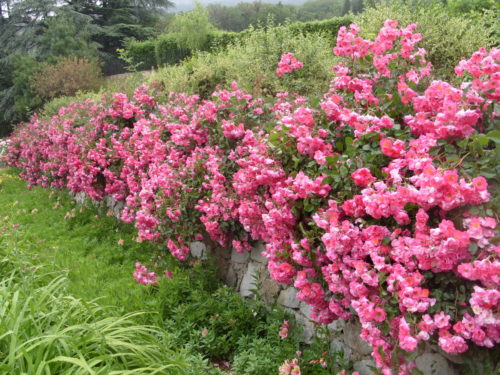
Step 3. Ready the ground for landing roses in the Urals
As for the preparation of a place to land roses, there are practically no differences here with other climatic zones. In the Urals Rose, everything also loves slightly acidic humus soils. Gardeners often use one trick for the fact that the roses subsequently turned well - on the bottom of the pit laid the manure that will warm the roots. Nutrient mixture for filling the pit is prepared as follows:
- 1 part of the sand;
- 1 part of clay;
- 0.5 pieces of wood ash;
- 3 pieces of humus;
- 2 parts peat.
It is better to add additionally and special fertilizer for roses, or buy an already ready mix for rose planting in the store.
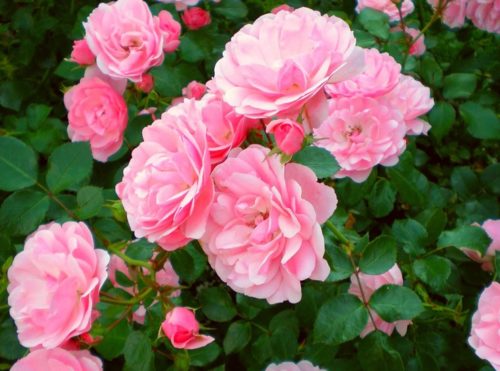
Step 4. Landing Roses in the Urals
- Pour the landing pit with a depth of approximately 50 cm.
- On the bottom of the pit lay horse manure.
- Fill the pit with a cooked nutrient soil.
- Saplings need to be prepared for landing: dip in the growth stimulator solution and shorten the roots longer than 20 cm.
- Be sure to keep track of the location of the roots during the landing. They must be in the direction from above - down. To do this, the nutritional mixture is poured by a hill, to the top of which they install a seedlove, and its roots straightened along the holly.
- In conditions of Siberia and the Urals, it is practiced by 7-8 cm landing. If you doubt the winter hardiness of the variety, you can land a rose directly in the plastic container, and fall to dig up without damaging the root system.
- Then the young seedling need to pour and dip the earth at a height of 15 cm.

Rose in the Urals: Care
Growing roses in the Urals will not be successful without proper and timely care. Some varieties require a little more attention, while others are slightly less. It is possible to allocate the most common scheme for roses in the Urals at different times of the year:
- feeding Roses are always willingly respond to feeding. For the period of the growing season, they need to have time to feed about 3 times: the first feeding in early June (Nasty Korovyaka), the second subcorter in July (nitrogen-phosphorus-potassium fertilizer), the third subcorder in early August (superphosphate and potassium);
- with the onset of autumn, it is necessary to reduce the watering as much as possible, remove the top growth kidneys, thus preparing a plant for winter;
- how to cover roses in the Urals and what kind of shelter method is the best to you will tell you by any gardener of the Urals. It is necessary to start the shelter at least 2 weeks before establishing persistent minus temperatures. From the bush you need to remove all green shoots, flowers, leaves;
- in the spring, when the snow has not yet come down, the roses need to "spend": raise the shelter, squeeze the bushes so that there is no destructive condensate from the temperature drop. Finally remove the shelter can be in early May;
- the remaining roses care activities remain the same as other colors: watering, weeding, loosening.
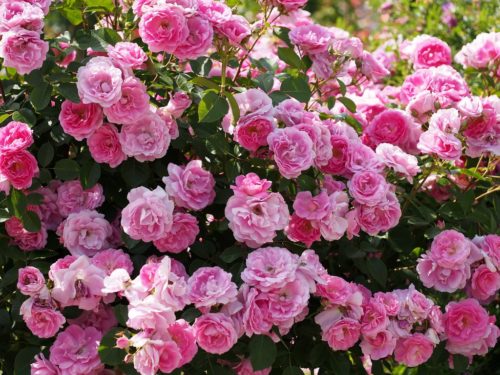
How to save rose saplings in the Urals
There are such cases when you purchased roses saplings, but they cannot be planted right now, and you need to save for several days or even until the next season. Here you need to adhere to the following recommendations:
- if you bought rose saplings with wax-covered stems, packed roots, then they can be stored in the basement in this form. And so that the roots do not lose moisture, simply open a slightly package and pour a little water there;
- if you got seedlings in the spring, then you can also save for a few days before landing. It is enough to simply ship into any capacity at an angle of 45 degrees;
- perhaps the most painstaking business will be preserving seedlings after landing. In the conditions of Siberia and the Urals, this is a paramount task. The bushes need to be trimmed, emphasize, clean the copper vitrios and make a special shelter. Pleet roses are removed from the supports and stacked on the ground, they are strengthened with hooks.

Options for rose shelters for winter in the Urals
Work on the shelter of roses for the winter in the Urals should begin as resistant minus temperatures are established, it is approximately in mid-October. Remember that it is better to cover roses a little later than do it before. If you are taking the bushes too early, then under the shelter to wake up the kidneys and shoots will go into growth, and this is completely wrong. An important condition is to hold work on the shelter in a dry time. If the weather is wet, it rained, then wait for the soil drying and the bushes themselves. Gardeners in the Urals use a variety of shelters of their "prickly beauties":
- "Aerial" shelter with a frame of metal rods and polyethylene (or another moisture-proof material), piled up earth;
- shelter from wooden shields for plenty roses in the Urals. This shelter is also represented in the form of a "house" of two wooden shields. The bushes are flexing to the ground, fasten the wire, covered with a snack, put a "house" and are covered with polyethylene. Such a shelter is practical, because You can maintain the "door" if the winter was launched;
- shelter from bags for stumbling roses. On the crown, the bag is dressed without the bottom, fill it with foliage and sweetheart, tie it, and the barrel is covered with burlap.
As you can see, the process of growing roses in the Urals, though time-consuming, but it is. Gardeners even in areas with Lujy winter frosts can grow in their garden "Queen of Flowers". The effort and desire to decorate their plot with spectacular bushes of roses will certainly help you achieve results. Successes!




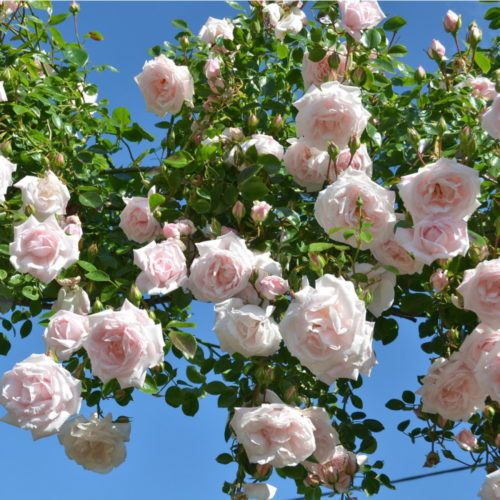
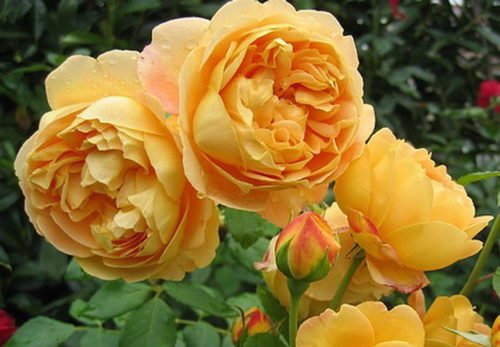
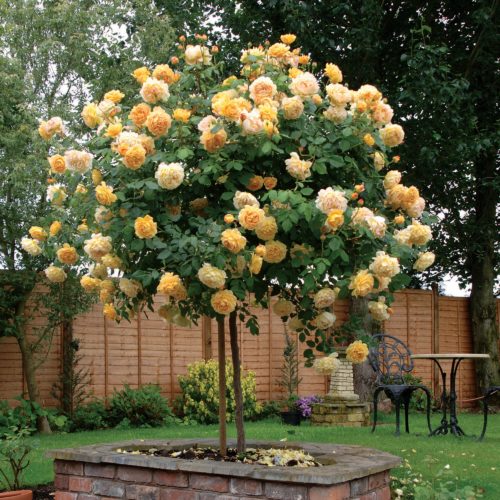
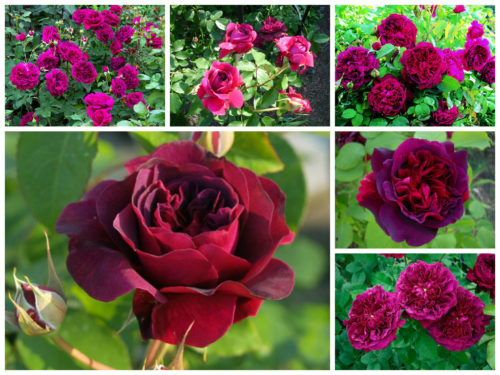
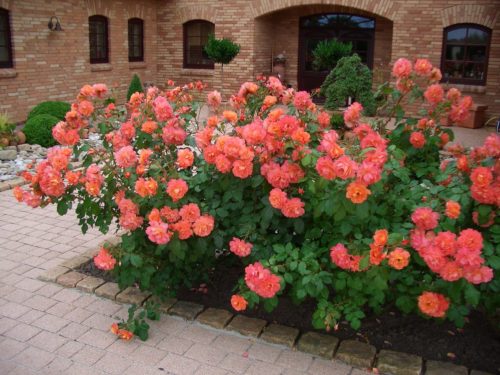
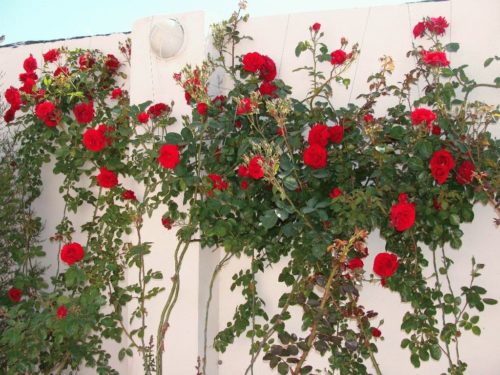













 Start a discussion ...
Start a discussion ...